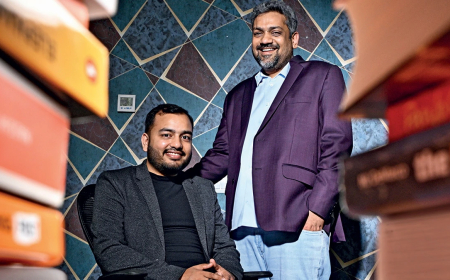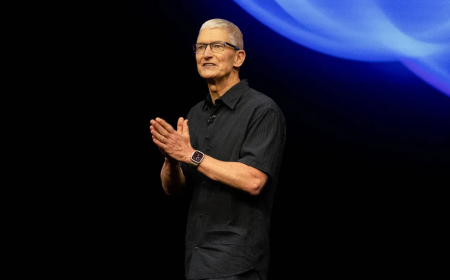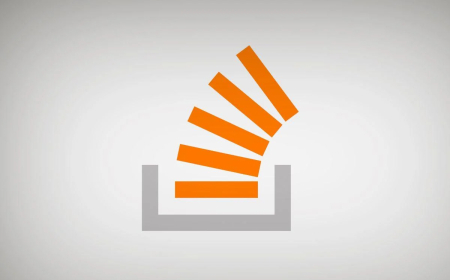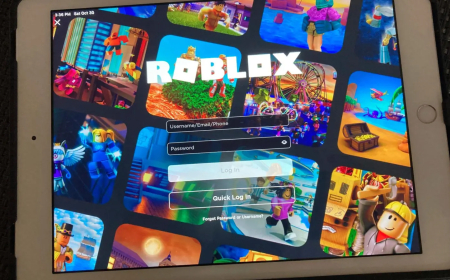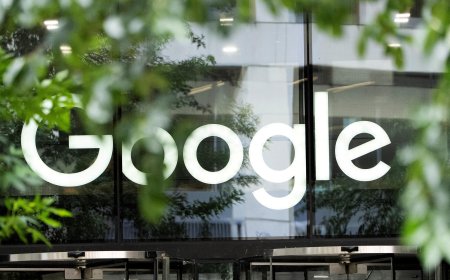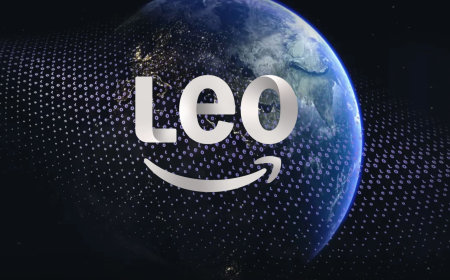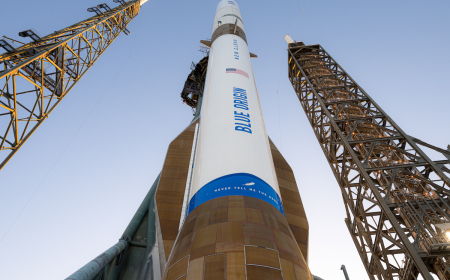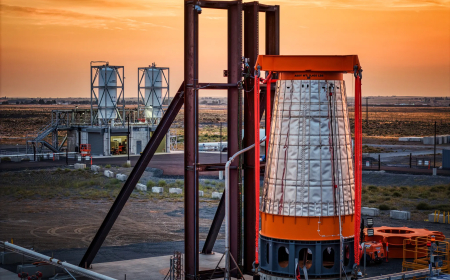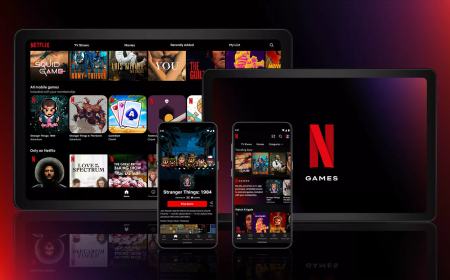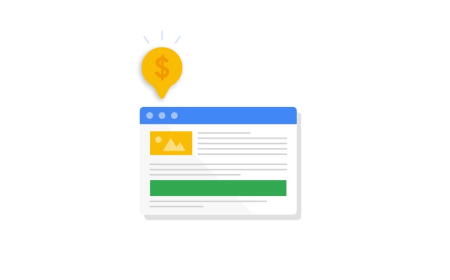‘Buy Now, Pay Later’ is expanding fast, and that should worry everyone
Buy Now, Pay Later use is surging in the U.S., with rising defaults, hidden “phantom debt,” and growing risks across consumers, lenders, and fintech markets.

When Nigel Morris tells you he's worried about the economy, you listen. As industry observers are aware, Morris co-founded Capital One. He pioneered lending to subprime borrowers, building an empire on understanding exactly how much financial stress the average American can withstand. Now, as an early investor in Klarna and other buy-now-pay-later companies, such as Aplazo in Mexico, he's witnessing something that makes him profoundly uncomfortable.
"To see that people are using [BNPL services] to buy something as basic and fundamental as groceries," Morris told me on stage at Web Summit in Lisbon this week, "I think is a pretty clear indication that a lot of people are struggling."
The statistics back up his unease. Buy-now-pay-later services have grown to 91.5 million users in the United States, according to the financial services firm Empower. As of earlier this year, 25% of users were using these services to finance their groceries, according to survey data released in late October by lending marketplace LendingTree.
These aren't discretionary purchases — the designer bags and latest Apple headphones that BNPL was initially marketed for. Borrowers aren't paying it all back, either. According to Lending Tree, default rates are accelerating: 42% of BNPL users made at least one late payment in 2025, up from 39% in 2024 and 34% in 2023.
This isn't just a consumer finance story; it's a canary in the coal mine for the entire venture-backed fintech ecosystem and beyond, echoing what preceded the 2008 mortgage crisis except for one thing: it's largely invisible.
Because most BNPL loans aren't reported to credit bureaus, they create what regulators call "phantom debt." That means other lenders can't see when someone has taken out five different BNPL loans across multiple platforms. The credit system is flying blind.
"In a world where, if I'm a buy-now-pay-later provider, and I'm not checking bureau data, I'm not feeding bureau data, I am oblivious to the fact that Nigel may have taken out 10 of these things in the last week," Morris explained. “[That’s] absolutely true.”
Storm clouds on the horizon
The available numbers are both outdated and unappealing. Consumer Financial Protection Bureau data published in January of this year — after the agency issued market monitoring orders to major BNPL providers, including Affirm, Afterpay, and Klarna — showed that roughly 63% of borrowers originated multiple simultaneous loans at some point during the year, and 33% took out loans from various BNPL lenders.
The data also revealed that in 2022, one-fifth of consumers with a credit record financed at least one purchase with a BNPL loan, up from 17.6% in 2021; about 20% of borrowers were heavy users originating more than one BNPL loan on average each month, an increase from 18% in 2021; and the average number of new loans originated per borrower increased from 8.5 to 9.5.
The borrower profile is as concerning: as of 2022, nearly two-thirds had lower credit scores, with subprime or deep subprime applicants being approved 78% of the time.
To be clear, BNPL isn't yet a systemic threat. The total market is measured in hundreds of billions, not trillions of dollars. However, the lack of visibility into this debt — combined with its concentration among already stressed borrowers — warrants closer scrutiny.
Indeed, given that the economy is worse now than it was three years ago for many subprime populations — particularly in auto lending — these numbers are likely higher now.
As for why BNPL data isn't more recent, thank the regulatory upheaval. Under the Biden administration, the CFPB attempted to treat BNPL transactions similarly to credit card purchases, bringing them under the Truth in Lending Act's protections.
The Trump administration reversed course. In early May, the CFPB stated that it would not prioritise enforcement of that rule. Days later, CFPB acting director Russell T. Vought rescinded 67 interpretive rules, policy statements, and advisory opinions dating back to 2011, including the BNPL rule. The agency stated that the regulations provided "little benefit to consumers" and imposed a "substantial burden" on regulated entities. (Translation: BNPL companies lobbied successfully.)
In fact, soon after, the CFPB released a new report with a surprisingly different message. Focusing only on first-time borrowers, the agency stated that customers with subprime or no credit history repaid their BNPL loans 98% of the time, and that there was no evidence to suggest that BNPL access causes debt stress.
The discrepancy between this rosy picture and the 42% late payment rate highlights the data gap at the heart of the problem: we currently lack good visibility into what happens to borrowers over time, especially those juggling multiple BNPL accounts. The optimistic report initially focused on first-time users; the concerning data, however, comes from the entire user base.
In May, the state of New York imposed licensing requirements on BNPL companies to fill the void. But state-by-state regulation creates a patchwork that sophisticated financial companies can easily navigate around.
Asked if he sees parallels between this moment and 2008, Morris — who has kept his finger on the pulse of all things financial as a fintech investor for the last 18 years — was careful not to overstate the comparison.
"So I think it is a real issue," he said of the economy, choosing his words deliberately. "If you take a half step back and we look at the U.S. consumer at the moment, and we have a number of businesses that are in and around lending to this consumer — so far, so good. Delinquency is not rising yet. Charge-offs are not rising yet. But there's clearly storm clouds on the horizon."
He pointed to unemployment hitting 4.3%, its highest level in almost four years. He cited the "tumult around immigration and around tariffs and around the recent government shutdown." Small and medium businesses are very loath to invest. People have pulled back dramatically in the last nine months, given all that noise."
Also in the mix is the end of the student loan payment moratorium — "the largest asset class outside of mortgage," Morris noted. Roughly 5.3 million borrowers are in default, a nd another 4.3 million are in late-stage delinquency, according to a September Congressional Research Service analysis.
Morris is careful to note that the current situation isn't yet a crisis. "Delinquency is not rising yet. Charge-offs are not rising yet," he acknowledged. But the combination of factors — phantom debt, rising unemployment, the end of student loan forbearance, and regulatory rollback — creates conditions where problems could accelerate quickly.
The big concern isn't BNPL debt alone — it's the cascading effects. The Federal Reserve Bank of Richmond has warned that BNPL's potential systemic risk comes from its "spillover effects onto other consumer credit products."
It is essential to understand that because BNPL loans are typically smaller than credit card balances or auto loans, borrowers tend to prioritise keeping them current, which means that other, larger debts tend to default first. Someone might have a perfect record on their four BNPL accounts while their credit card, car loan, and student loan all go delinquent.
Consumer lending takes 'the mom test'
Morris has lived on both sides of this equation. He revolutionised subprime lending at Capital One. Then he backed fintech startups trying to disrupt the old guard, including Klarna, which went public earlier this year and currently boasts a $13.5 billion market capitalisation, even though it's barely profitable (in part because it absorbs all the default risk of borrowers).
Given those years of insights, I asked him on stage: "Where is the line between catering to and helping an underbanked population and enabling people to dig a hole for themselves? Have these companies crossed it?"
Morris seemed genuinely to wrestle with the question, telling the investor attendees who'd gathered to learn from the conversation that it's a "very, very difficult question to answer. I think that the role of the moral compass in consumer lending is very, very important."
He described "the mom test" from his Capital One days: "If this idea was presented to your mother and she called you up and said, 'Son, should I take this product?' And if you can't unequivocally say, 'Yes, it's a good product,' you should not be offering it to the American people."
Presumably, Morris wouldn't put BNPL companies in this camp given his investments. But perhaps the rest of us should, at least while regulations — or a lack of them — remain what they are. Consider that because most BNPL companies don't report to credit bureaus, it not only makes visibility into them challenging, but it also means that borrowers can't use successful repayment to access lower-cost credit.
That's part of the business model, by the way. "Some of these buy-now-pay-later companies don't want that to happen" — meaning for their customers to build up their credit scores — "because they don't want the consumer to graduate," Morris said.
While Morris and I were discussing these ethical questions, the problem is poised to grow much bigger, with BNPL bleeding into every corner of the financial system, and the borders between this unregulated form of lending and traditional banking disappearing entirely.
Klarna has been operating as a licensed bank in Europe since 2017. Affirm now has nearly 2 million debit cardholders who can finance purchases in physical stores, bringing invisible instalment debt into brick-and-mortar retail. Both companies are integrated into Apple Pay and Google Pay, making BNPL as frictionless as tapping your phone.
Not wanting to be left behind, more established finance companies are also racing toward BNPL now. PayPal reported that it processed $33 billion in BNPL spending in 2024, representing a 20% annual growth. Major banks now let customers split purchases after the fact. Through partnerships with payment processors such as Adyen, JPMorgan Payments, and Stripe, Klarna's services now reach millions of merchants automatically. What started as a niche checkout option is becoming an embedded financial infrastructure.
Morris sees this shift happening everywhere. "When I talk to some of these software companies that are now embedding payments, lending and insurance," he told me, "and you say, 'Okay, five years from now, where are you going to make your money?'" The answer surprises even veteran investors like him. "They say, 'You know what, I think I'm going to make more money in embedded finance than I am in my core software.'"
Continued Morris: "It starts off as a nice little add-on, but when the powers of the marketplace drive down the returns in the core business, it's often these financing businesses that have the greatest longevity and market power."
A second bubble?
The real danger lies in what's coming next: business-to-business BNPL. The trade credit market, where suppliers lend to companies purchasing their products, represents $4.9 trillion in payables among American firms alone, according to data cited by The Economist. That's four times larger than the entire U.S. credit card market. And BNPL companies, having conquered consumer lending, are now moving aggressively into this space.
When small businesses gain access to BNPL, their spending increases by an average of 40%, according to B2B BNPL providers like Hokodo. It sounds great for commerce until you realise what it means, which is more debt, accumulating faster.
Indeed, the debt itself is being packaged and sold at a pace that should alarm anyone who remembers the 2008 financial crisis. Elliott Advisors purchased Klarna's $39 billion British loan portfolio last year. In 2023, KKR agreed to buy up to $44 billion in BNPL debt from PayPal. As of June of this year, Affirm had issued around $12 billion in asset-backed securities.
This is the subprime mortgage playbook playing out in real time: slice up risky consumer debt, sell it to investors who believe they understand the risk profile, and create layers of financial engineering that obscure the actual exposure. Except this time, a lot of that underlying debt isn't being reported to credit bureaus.
My own takeaway from my sit-down with Morris — and my research leading up to it — is that we're watching two potential bubbles right now, but only one is getting the attention it deserves, at least in Silicon Valley.
The AI bubble has been dominating headlines in recent weeks, as a growing number of people question the $100 billion data centres, sky-high valuations, and jaw-dropping venture rounds we're seeing.
The BNPL situation is different but no less worth watching. It's invisible, lightly regulated, and affects the most vulnerable Americans, which is roughly 40% of them. It's people financing their meals in four instalments, a nd recent graduates juggling student loan payments with three different BNPL accounts.
The champagne is flowing so freely in specific sectors of the economy that it makes this huge problem easy to overlook. Still, when consumer debt becomes unsustainable, there will be widespread pain, and VCs and their venture-backed businesses will be among those to feel it.
As Morris watches his BNPL investments from the other side of the table, he seems to understand these warning signs better than most. He's not predicting a crash — he's urging vigilance. The question is whether regulators will take action before it's too late.
What's Your Reaction?
 Like
0
Like
0
 Dislike
0
Dislike
0
 Love
0
Love
0
 Funny
0
Funny
0
 Angry
0
Angry
0
 Sad
0
Sad
0
 Wow
0
Wow
0
